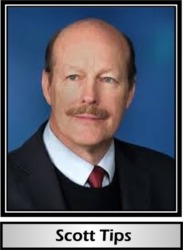- It helped users quickly fall asleep;
- It helped users lose weight effortlessly;
- It was an aphrodisiac.
In the heat of the many law-enforcement actions that spread across the country, I was able to keep my client out of prison; but others, especially manufacturers, were not so fortunate. Some served short prison terms. Oh, and, by the way, GHB was strong competition for the contemporaneous prescription and OTC drug aids for sleeplessness and weight loss, such as Sonata (Zaleplon) as a sleep aid and Fenfluramine for weight loss.
Remember, up until the FDA’s press release, GHB was being sold in health-food stores on a regular, over-the-counter basis—just as has been the case with N-Acetylcysteine (NAC) of late.
The FDA Eliminates Competition and With It, Our Health
The FDA also ran interference for its pharmaceutical paymasters when, on March 22, 1990, it banned L-Tryptophan, a natural sleep aid and calming agent that threatened pharmaceutical drugs such as Prozac that were soon to be released in the marketplace. (In fact, just four days after tryptophan was banned, Newsweek magazine published a lead article on the great benefits of Prozac.)This happened again with Yeast-Gard, an OTC homeopathic suppository that one of my then-clients, Wakunaga of America, cleverly released on to the market just before the existing prescription allopathic suppositories were set to become OTC. Yeast-Gard was a huge success, but of course the FDA jumped in once again when a natural product’s popularity and success ate into pharmaceutical-industry profits. Fortunately, this time the natural product, Yeast-Gard, won and remained on the market.
GHB, L-Tryptophan, and Yeast-Gard are by no means the only examples of the FDA throttling natural-product competitors that threaten the pharmaceutical industry’s bottom line on a large scale. GcMAF—a glycoprotein macrophage-activating factor that is naturally produced in every healthy human and has proven to be stunningly effective at treating cancer—is still unavailable in the United States thanks to the FDA.
Sadly, the list of suppressed effective natural-health remedies is a lengthy one and the death toll as a result even lengthier. Decades ago, health and biomedical researchers Durk Pearson and Sandy Shaw pointed out that the FDA has been responsible for more deaths than all of the wars in which the United States has fought from the Revolutionary War to the Vietnam War. I agree and would even update that timeline to include the present, endless wars.
The Latest Target: N-Acetylcysteine
So, we should all well know by now that the FDA is constantly hyper-alert for any threat to the pharmaceutical paradigm within which it operates and profits.As National Health Federation (NHF) Board member and former long-time retail health-food store owner Michael LeVesque has pointed out, “What does NAC do that makes it such an important nutrient to keep on the shelves of stores everywhere without a prescription? … [T]he practical side is that painters, smokers, and anyone exposed to toxins will want to use it for its protective benefits. Anyone who wants lustrous, strong, healthy hair growth, and nail growth, will want to use it. Anyone who suffers from a multitude of ailments will want to use it. Anyone on radiation or chemotherapy will want to use it. Anyone suffering from immune function loss, lung and breathing problems, or HIV or other diseases will want to use it.”
And, yet, offering the very belated claim that NAC had received marketing approval in September 1963 as an inhalant drug for respiratory problems, one office in the FDA has decided after 57 years (and after 30 years of concurrent sales of NAC as both a drug and a supplement), to argue that NAC is exclusively a drug per Section 201(ff)(3)(B)(i) of the U.S. Food, Drug, and Cosmetic Act, which section essentially holds that any ingredient first approved and sold as a drug cannot later be sold as a supplement. The irony that other ingredients, such as potassium, niacin, and even fish oil, have long been marketed and sold both as drugs and as supplements appears to have been lost on the tone-deaf FDA.
In July 2020, the FDA sent warning letters to seven supplement companies selling hangover products containing NAC, claiming in its letter, among other things, that NAC was not lawful for sale as an ingredient in a dietary supplement because NAC had already been approved as a drug prior to such supplement sales. Or so the FDA’s Office of Nutrition and Food Labeling, which sent the warning letters, says. This Office only considers claims on labels and labeling. It is not concerned with making decisions about whether or not an ingredient can be marketed as a dietary supplement, or part of one.
The Industry Reacts
Yet, on that flimsy basis and before any final agency action on the matter had been issued, Amazon.com—the largest online seller of supplements—stopped selling NAC, although one of my clients has recently said that she can still buy and has bought NAC from Amazon.Greg Kunin, CEO of OLA LOA Products and NHF Vice President, probably spoke for many when he reflected that, “NAC has played a significant role in our products since we launched our company back in 1999. We were proud to be the first vitamin drink to provide complete methylation support along with NAC, which plays a role in the production of Glutathione, the master antioxidant of the body. Yet, I was stunned when I heard that the FDA was considering reclassifying NAC as a drug and was confident that nothing would come of it insomuch as it was grandfathered in by DSHEA.
“What I was not prepared for was that Amazon would preemptively ban the sale of NAC-containing supplements. This single act has effectively removed NAC from the marketplace and jeopardized the health of consumers. This is even more troubling coming at a time when we are dealing with a pandemic and the need for immune support is more important than ever. Because of this action by the FDA, many vitamin companies have decided to comply and simply remove NAC entirely from their product line.
“For OLA LOA it has meant redesigning our product formulas and creating new packaging which comes at a significant cost and delay along with lost sales. It has also meant that we are unable to distribute through the largest retailer in the World, which for many consumers is the only place they shop and learn about dietary supplements.“
With more than 1,500 NAC-containing products on the market, OLA LOA is not the only supplement company with a dilemma on its hands. But refusing to acknowledge any dilemma, the Natural Products Association (NPA) has been correctly advising its members to continue selling NAC-containing supplements since the FDA has not yet taken final action on NAC and since it is still an open question as to when NAC first appeared on the market as a drug. NPA’s president, Daniel Fabricant, has spoken plainly: “Like we’ve told our members, sell it direct. Sell it through other vendors because it’s not an unlawful ingredient. This is by no way a closed chapter with FDA on NAC.” I agree.
The Council for Responsible Nutrition (CRN), another trade association, also agrees. In a powerful letter, dated December 4, 2020, CRN’s Steve Mister and Megan Olsen challenged the FDA’s actions as “legally invalid.”
Legal Arguments Destroy the FDA’s Position on NAC
CRN’s letter makes a number of powerful arguments, joined in by many others, that undercut the FDA’s regulatory position on NAC (and to which I have added):- The supposed drug-approval date of “1963” for NAC is suspiciously handwritten and appears to be unsupported by any other evidence of such early approval or even the identity of the person who wrote the date.
- The drug supposedly approved for marketing in 1963 was an inhalation drug and not to be administered orally, which, according to Section 201(ff)(3)(B)(i), should be treated as a different “article” than an orally taken dietary supplement.
- The first approval for an NAC-containing drug administered orally alone did not occur until 2016, well after the date of first use of NAC as a supplement.
- The first approval for an NAC-containing drug administered both by inhalation and orally occurred in 1982, but that single drug was discontinued and was not replaced by any similar drug until August 1994. Regardless, both drugs are once again different “articles” and discontinued drugs should not be used as a pretext to prevent supplements from going to market.
- Section 201(ff)(3)(B)(i) cannot be applied retroactively to any supplement marketed before the Dietary Supplement Health and Education Act (DSHEA) was passed and signed into law on October 25, 1994 since (a) Congress made no provision for retroactivity and (b) the entire purpose of that Section was to incentivize drug companies to develop new drugs, which incentive is missing if the same drug and supplement were already on the market prior to this DSHEA provision even existing.
- FDA’s sudden change to its longstanding policy of permitting dietary supplements containing NAC to be marketed is arbitrary and capricious since the FDA has multiple times referred to NAC as a dietary supplement.
- Closely related to the “arbitrary and capricious” defense, the equitable doctrine of laches forecloses any party who has unreasonably delayed or otherwise shown a lack of diligence in pursuing a claim, all to the prejudice of the other party, from bringing any action against that other party on that claim. Here, the FDA delayed for decades declaring NAC a drug only, while numerous companies already invested significant sums of money to bring NAC supplements to market and keep them there.
- The specific FDA office—the Office of Nutrition and Food Labeling—that issued the warning letters to the supplement companies making the hangover marketing claims does not have the authority to decide whether or not any ingredient is permissible or not.
- The FDA Office of Nutrition and Food Labeling did not follow the procedural requirements of the enabling statute that would allow the FDA to issue a legally binding regulatory order on the sale of NAC-containing supplements.
Editor’s Note: This article is intended for information purposes only. Because state and municipal laws vary greatly, as do the circumstances of individual cases, readers are advised to contact an attorney for specific legal advice. © Scott C. Tips 2021
Note: The views and opinions expressed here are those of the author (s) and contributor (s) and do not necessarily reflect those of the publisher and editors of WholeFoods Magazine. Information in this article is intended for educational and scientific purposes only. It is not intended as medical or nutritional advice for the treatment or prevention of disease. For medical advice, consult your personal health care practitioner.










